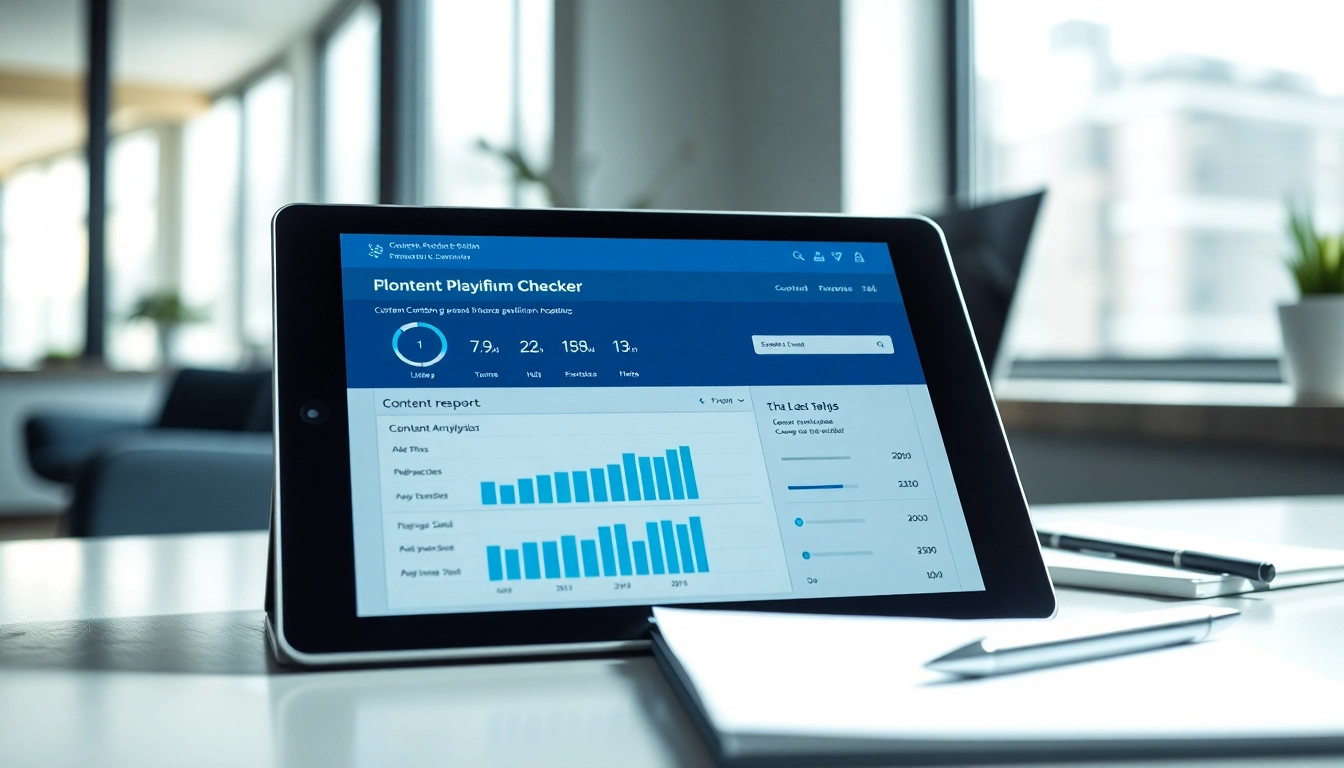Understanding Plagiarism Checkers
With the increasing emphasis on originality in writing and the pervasive nature of online content, plagiarism checkers have become essential tools for students, writers, and professionals alike. A plagiarism checker helps ensure the integrity of your work, providing a safeguard against unintentional copying of ideas or text. In this article, we will explore what plagiarism checkers are, how they function, and why they are critical in today’s content-driven landscape.
What is a Plagiarism Checker?
A plagiarism checker is a software tool designed to scan documents, essays, or any form of written content to identify instances of plagiarism. These tools compare the submitted content against a vast database of existing texts, including websites, books, journals, and articles, to detect similarities in wording or structure. The ultimate goal is to ensure that the work presented is original and properly cited.
How Plagiarism Checkers Work
Plagiarism checkers use complex algorithms to analyze text and identify identical or similar passages. The process generally involves the following steps:
- Text Segmentation: The checker divides the submitted text into smaller segments, typically sentences and phrases.
- Database Comparison: Each segment is then compared against millions of existing documents stored in the plagiarism checker’s database.
- Similarity Detection: When matching phrases or sentences are found, the checker calculates the percentage of similarity and highlights the potentially plagiarized content.
- Reporting: The final output includes a detailed report outlining where similarities were found, along with links to the original sources.
The Importance of Using a Plagiarism Checker
With academic integrity and originality being prized more than ever, using a plagiarism checker can help:
- Avoid Academic Penalties: Educational institutions employ strict policies regarding plagiarism; a plagiarism checker can help prevent unintentional infractions.
- Enhance Writing Quality: Identifying over-reliance on source material can encourage writers to develop their distinctive voice and style.
- Protect Intellectual Property: For professionals and businesses, a plagiarism checker can safeguard original content, ensuring that intellectual property rights are respected.
- Build Credibility: Presenting original, properly cited work helps establish the author’s credibility and authority in their field.
Types of Plagiarism Checkers Available
Free vs. Paid Plagiarism Checkers
Plagiarism checkers come in a variety of options, primarily divided into free and paid versions. Free plagiarism checkers often provide basic features sufficient for casual users. However, they may lack depth in their database or the ability to handle large documents. In contrast, paid tools generally offer a more comprehensive service, including:
- Access to extensive databases.
- Advanced features such as grammar checks and detailed analytics.
- Higher limits on document size for checking.
- Customer support for users facing issues.
AI-Driven Plagiarism Checkers
Recently, the incorporation of artificial intelligence in plagiarism detection has transformed the industry. AI-powered tools can not only find copied content but also recognize paraphrased material that may not be detected by traditional methods. These tools often use machine learning algorithms to improve their accuracy over time, making them invaluable for high-stakes writing tasks.
Specialized Plagiarism Checkers for Students and Professionals
Different users may require specialized plagiarism checkers. For instance, students often need straightforward checks against academic databases, while professionals may require tools that can scan through industry-specific publications. Services such as Turnitin are geared towards educational institutions, while offerings like Copyscape cater more to webmasters and content creators.
Common Features to Look For
Accuracy and Speed of Detection
When choosing a plagiarism checker, two fundamental factors to consider are accuracy and speed. An effective tool should be able to produce results quickly, ideally in real-time, while also accurately identifying potential instances of plagiarism. Look for services that boast a high detection rate, ideally supported by user testimonials or independent reviews.
User-Friendly Interfaces
A sophisticated tool is useless if it lacks usability. User-friendly interfaces enable users to navigate through the features effortlessly. Checkers should allow for easy document uploads and provide clear and concise reports that highlight the relevant findings without overwhelming the user with technical jargon.
Integration with Other Tools
Many writers use multiple resources during their workflow, from grammar checkers to project management tools. Therefore, a plagiarism checker that integrates seamlessly with these services can improve efficiency significantly. Look for plugins or APIs that facilitate easy cross-platform functionality.
Best Practices for Using a Plagiarism Checker
Regular Checks During Writing
To maintain the integrity of your work, it is crucial to utilize a plagiarism checker at various stages of the writing process. Regular checks help catch similarities immediately, allowing for proper citation or rephrasing before the final submission.
Combining Manual and Software Review
While software tools are extraordinarily powerful, they shouldn’t replace human judgment. Combining the use of plagiarism checkers with manual editing and review ensures that nuanced plagiarism situations—such as self-plagiarism or insufficient paraphrasing—are easily caught.
Understanding Detailed Reports and Feedback
Most plagiarism checkers will provide detailed reports on the results of the analysis. Understanding how to interpret this data can help improve future writing practices. Pay attention to the highlighted sections and practice rewriting these areas for deeper comprehension of citation norms and writing originality.
Future Trends in Plagiarism Detection
The Role of AI and Machine Learning
AI and machine learning will continue to play a pivotal role in the evolution of plagiarism detection tools. As AI becomes more sophisticated, it will be able to identify not just exact matches but also similar concepts and themes throughout documents, potentially revolutionizing how we approach content creation.
Improved Accuracy and Scope of Detection
Future advancements in technology are expected to enhance both the accuracy and scope of plagiarism detection software. As databases expand and algorithm capabilities improve, tools may be able to detect more subtle forms of plagiarism, including the hidden paraphrase.
Challenges and Ethical Considerations
Despite advancements, challenges remain. Ethical considerations, such as privacy concerns regarding data use and storage, must be addressed proactively. Furthermore, as AI and machine learning grow, establishing a balance between automated systems and human oversight will be essential in maintaining academic integrity.



